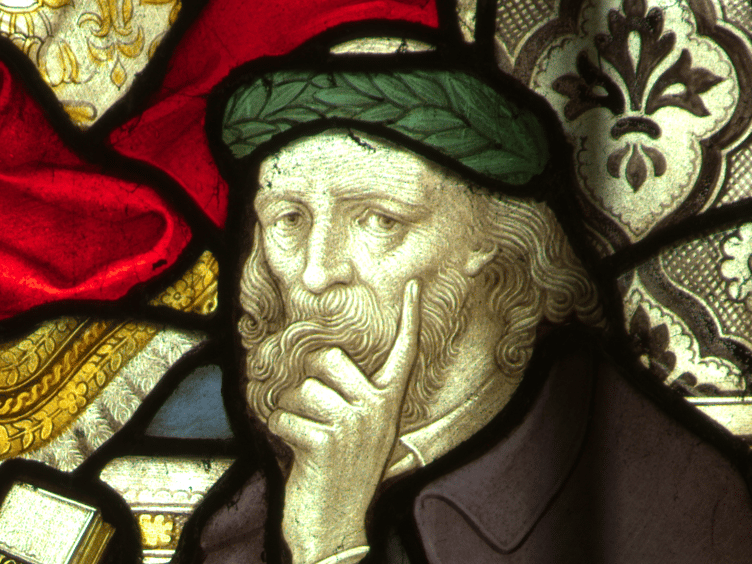VERY occasionally, a poet changes our perception of the world. Two such poets feature in Truro Cathedral’s story-telling windows, writes Judith Field.
The first window illustrates the Italian poet Dante Alighieri’s ground-breaking Divine Comedy. This colossal 14,233-line poem opens with Dante an exile, lost in despair. In a dark forest, he is stalked by three evil animals - a she-wolf, a leopard and a lion - until a ghostly figure, his spirit-guide Virgil, takes him by the hand and leads him down to the underworld.

Virgil guides Dante through the nine circles of Hell (or ‘Inferno’) where sinners face poetic justice for their crimes. Fraudsters stand neck deep in dung and bullies fight with each other eternally. However, the message of the poem is that all is not lost for Dante (or any of us). In the second and third parts, he learns to be honest with himself about his sins and gradually climbs upwards through Purgatory until eventually he reaches Paradise.
Dante’s lurid descriptions of the Inferno, published in 1320, fascinated readers and inspired artists including Michelangelo and Botticelli. There was a real-world impact too - many people did good works or gave gifts to the church to try and avoid a long stay in Purgatory after their deaths, and the church sometimes granted ‘indulgences’ which were supposed to reduce the amount of time to be served there.
Extraordinarily, in 1400 Pope Boniface IX granted an indulgence to anyone who visited St Mary’s Church, Truro (now St Mary’s Aisle in the cathedral) on August 2 each year. A visit that day meant a free pass out of Purgatory after you died!

A second great poet in the cathedral windows is Alfred, Lord Tennyson, the Poet Laureate to Queen Victoria. Many people will have learnt The Charge of the Light Brigade or his Arthurian poem The Lady of Shalott at school, but in the window, he holds something more personal: “In Memoriam A.H.H.”
This poem charts his painful and slow recovery from despair after the loss of his dearest friend, Arthur Henry Hallam, at the age of just 22. Written over 17 years, it has 133 sections and describes his struggle with overwhelming grief. On publication in 1850, it resonated strongly with a public that had bitter experience of early deaths. The poem greatly influenced Victorian attitudes to mourning, and Queen Victoria herself was comforted by it after Prince Albert died.
Both Dante and Tennyson wrote movingly about their personal journeys from desolation to hope and faith, and encourage us to reflect on how we can help ourselves and each other overcome despair. Cornwall MIND is just one local organisation that makes a difference, and the cathedral is another, an oasis of calm and reflection.
Carol singing to raise funds for both charities will take place on the steps of the cathedral during late night shopping on November 26 and December 3, from 5.30pm to 6.15pm - a peaceful start to the Christmas season.





Comments
This article has no comments yet. Be the first to leave a comment.